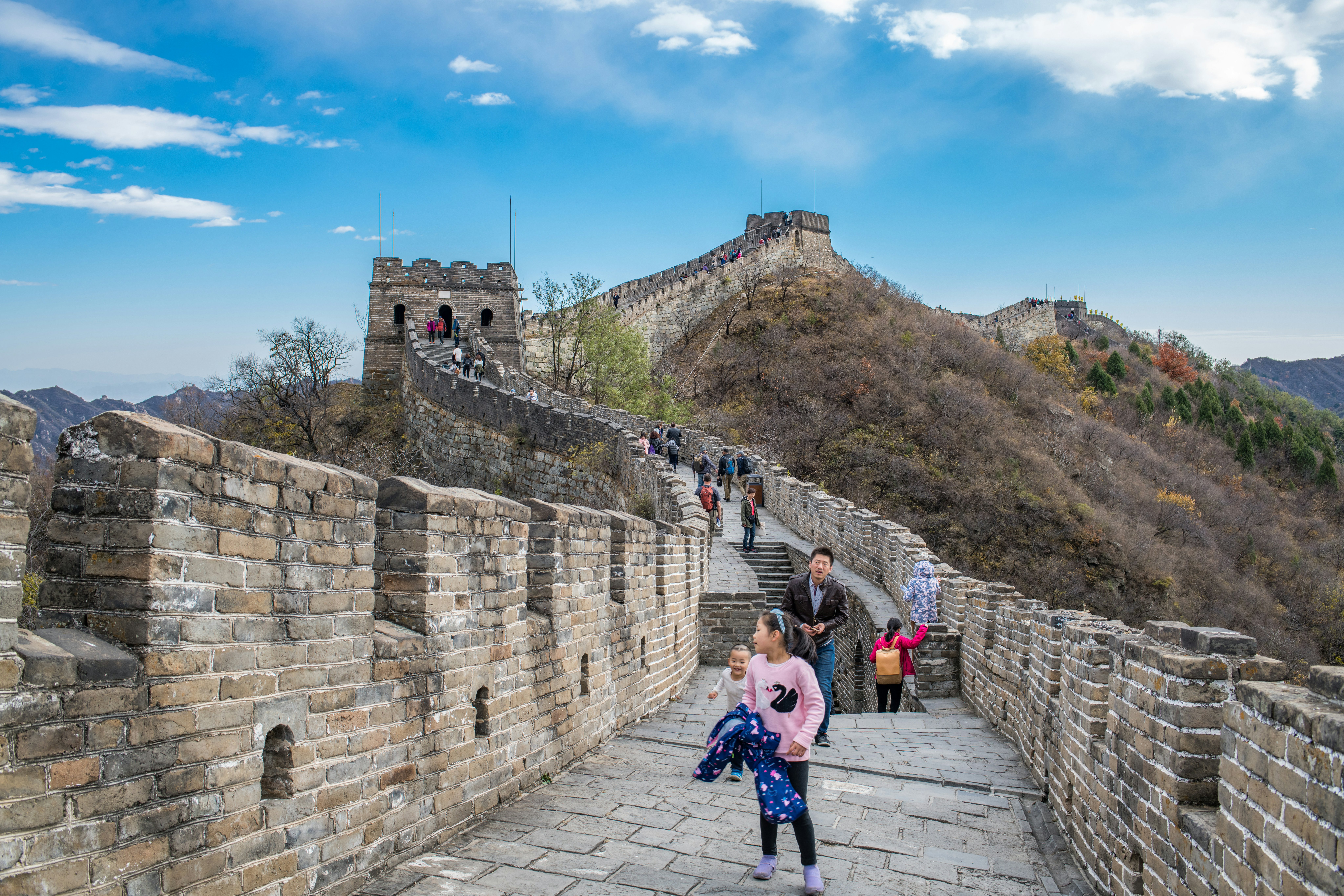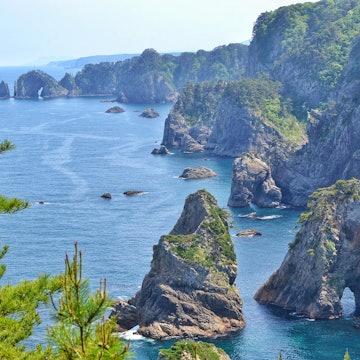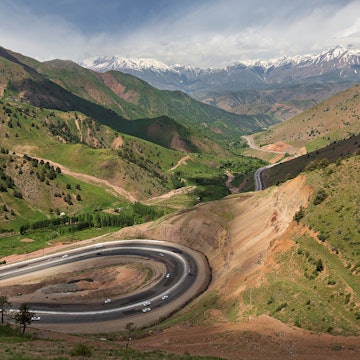
What you should know about visiting the Great Wall of China



Tourists walking along the Great Wall at Badaling. akimov konstantin/Shutterstock
Cloaked in legend and mystique, the Great Wall of China crosses mountains, grasslands and desert on its tireless course across what used to be China’s northern frontier.
A border defense system garrisoned by hundreds of thousands of soldiers at various times in the nation's turbulent history, the Great Wall today is a UNESCO World Heritage site and is in a state of picturesque yet precarious ruin, a fading relic with only a tiny fraction of its total length restored and open to tourists. This is everything you need to know about about making a trip to the Great Wall of China.
History of the Great Wall of China
The Wall has loomed large in the world’s imagination since travelers first brought tales of it to the West around the 16th century. Even today, this remarkable monument to human endeavor remains a misunderstood marvel. In fact, it’s not one Wall but a great many border defense structures built centuries apart, which, when taken together, present an architectural record of the ebb and flow of conflict between the settled Chinese and the fierce nomadic tribes beyond the Wall, such as the Xiongnu (descendants of the Huns) and the Mongols.
The earliest section of the Great Wall dates back almost 2000 years to the emperor who first unified China, Qin Shi Huang (of Terracotta Warriors fame), though most of what is visible today was built just five centuries ago during the Ming Dynasty (1368–1644). The Ming built or rebuilt atop older stretches of wall to form an undulating, overlapping defensive barrier stretching from ocean to desert.
The strategically critical upland sections around the capital Beijing, amounting to around 600km of the Ming Great Wall, were built from slabs of local granite and bricks, lined with ornate watchtowers and often followed the high ridgelines of mountains. Along China’s arid northern plains, meanwhile, the Wall was less formidable, fashioned mostly from tamped earth.

How long is the Great Wall of China?
The absolute length, including every branch, tributary and intervening natural feature (such as impassable cliffs) of the Ming Great Wall has been put at a staggering 8850km. A 2012 Chinese government survey calculated the total length of all fragments of the Great Wall that have ever stood across multiple dynasties, including parallel walls and walls that have weathered away completely, to be 21,196km.
From east to west, the Wall stretches across 23 degrees of longitude and snakes its way through 15 Chinese provinces. When the sun sets on the Wall’s eastern tip near the Korean border, it takes almost two hours until it dips behind its far-western reaches along the old Silk Road into Central Asia.
How was the Great Wall used?
During the Ming Dynasty, almost a million troops were garrisoned on the Wall (roughly 110 soldiers per km), living in the watchtowers and moving rapidly between them when necessary to repel an invasion. The Ming’s great enemy, the Mongols, were formidable horse-mounted soldiers and archers, and so the Chinese depended on the Great Wall to mount an effective defense. As well as being an elevated highway for transporting troops, horses and equipment, it also had a beacon-tower system that used smoke signals generated by burning wolf dung to transmit news of enemy movements back to the capital, Beijing. Weapons used by defenders were surprisingly advanced for the time, and included automatic crossbows, canons and an early type of landmine.
But despite the Ming’s mastery of wall defense, the Manchu found a way through (walls are only as reliable as their gatekeepers), conquered Beijing and established the Qing, China’s last imperial dynasty (1644–1912). Although the Qing had some use for the Ming walls, and added a few of their own, the greatest era of wall building in the history of mankind had come to an end, and the battlements were eventually abandoned, their unmanned bricks and stone at the mercy of scavengers.

The Great Wall in modern times
Travelers to Beijing in the late 19th century would journey the 60km out of the city to the Great Wall by mule litter, a bone-rattling expedition that would take two days. Their destination was Badaling, a high gorge in the Jundu Mountains. The Wall here, though crumbling, was particularly grand, reflecting the strategic importance of this portal between the fertile lands of the capital and the plains beyond. By 1909, China’s first self-built railway connected the capital to Badaling, but visits to the Great Wall were later curtailed by the war with Japan and then the Chinese Civil War.
The triumphant Communists didn’t initially have much interest in the Wall, with Mao Zedong encouraging farmers living nearby to use it as a source of free building materials. In the mid-1950s, however, it was decided that the Great Wall at Badaling should be the site of the first major Wall restoration since the Ming Dynasty. Then, and again in 1987, two restoration projects have resurrected over 8km of wall and more than 20 watchtowers. Revitalized as a patriotic exemplar of the People’s Republic of China, hundreds of foreign heads of state, including Nixon, Thatcher, Gorbachev and Obama, have smiled for the cameras on its battlements, and hundreds of millions of tourists, both Chinese and foreign, have huffed and puffed up its steep steps.
Current preservation efforts
Caring for the Great Wall of China is an enormous endeavor. The State Administration of Cultural Heritage is in charge of protecting and fixing the Wall and recent projects include fixing crumbling sections and restoring old watchtowers using traditional materials. The administration also works with experts and local conservationists, who advise on the best ways to counterbalance erosion from weather and heavy tourist traffic. Modern technology such as remote sensing keeps track of the Wall’s condition and helps ensure its endurance for future generations.

Tips for visiting the Great Wall of China
Where to visit
For first-time visitors, Badaling and Mutianyu are the most accessible and well-preserved areas, both reachable from Beijing. Badaling is more popular as it was the first section opened to the public, while Mutianyu is a less crowded experience and has beautiful views. Both feature restored paths and even cable cars to help with the steep climbs. If you want a more rugged, off-the-beaten-path adventure, Jinshanling and Simatai offer excellent hiking opportunities with unrestored stretches that give you a glimpse of the wall in its raw form. Shanhai Pass, where the wall meets the sea, offers incredible photo opportunities.
Where to start your trip
If you're traveling from Beijing, it’s easiest to start your trip at Badaling or Mutianyu. Badaling is only about an hour away by high-speed train or bus, while Mutianyu is slightly farther but less crowded. For more remote sections like Simatai or Jiankou, group tours are recommended due to limited public transport options and safety issues – these parts of the Wall can be difficult to access and dangerously unstable. Operators such as Beijing Hikers or Wild Wall Experiences offer a multitude of options depending on how much time you have in the area.

When to visit the Great Wall of China
Spring and autumn are the best times to hike the unrestored sections of the Great Wall, although after summer, the vegetation on the battlements in some areas can be too dense to pass. Winters on the Wall are bracingly cold but refreshingly light on visitors. Check the weather conditions carefully before embarking on a hike to any section of the Wall.
Nearby villages
If you want to connect more with the local culture, visit the nearby villages, especially in Gansu province and Inner Mongolia. Hiring a local guide will enhance your experience and is also a wonderful way to support these communities while gaining deeper insights into the wall’s history and the rich heritage surrounding it.
Where to stay
Although the vast majority of visitors do the Great Wall as a day trip, you’ll find places to stay at pretty much every visitable section within a reasonable distance of Beijing. Staying overnight allows you to see both sunrise and sunset from the battlements and increases point-to-point hiking options considerably (bear in mind that many hotels and other lodging options close from November to March). You can find official campsites close to the Great Wall at several sections, including Jinshanling and Huanghuacheng Lakeside Great Wall.

What to pack
Sturdy hiking shoes, layers of clothing, sunscreen, water and snacks are all essential items. A small first aid kit is also a good idea, especially for longer hikes.
If you’re planning to take photos, a wide-angle lens will help capture the grandeur of the wall. The best times for photography are early morning or late afternoon when the light is softer and there are fewer tourists. Jinshanling is particularly picturesque for stunning sunrise or sunset shots.
Flying a drone over the Great Wall of China is allowed but only under strict conditions. You must stay at least 30m from people, which can be difficult at busy sites like Badaling. All drones must be registered with the Civil Aviation Administration of China – DJI drone users can register through the app, while other drones need online registration and a QR code attached. Standard Chinese drone regulations apply: keep your drone within sight, stay below 120m and avoid crowds and urban areas.
Where to eat
The best advice for any Great Wall excursion is to take your own food and water with you. Ticketed Great Wall sections offer a basic spread of Chinese and Western fast-food outlets, while at unrestored spots such as Jiankou you can often find farmer-style courtyards (农 家院, nóngjiāyuàn) to eat at.

How to get there
You can access the Great Wall outside Beijing by road or rail. Official tourist buses connect directly with the ticketed sections at Badaling, Jinshanling and Simatai, while for Mutianyu there’s the private Mu Bus service. The Beijing North Station has a train route to Badaling.
Arranging a car and driver is generally the best way to visit unrestored sections like Jiankou and Huanghuacheng. The following car services offer tours from Beijing:
Miles Meng Car Service: Reliable, English-speaking driver service with a variety of decent vehicles. Check the website for pricing by destination.
Bespoke Travel Co: Drivers and guides for tailor-made Great Wall excursions.













